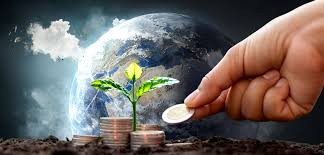
Climate change is no longer a distant problem. Across the world, extreme weather events like floods, wildfires, heatwaves, and rising sea levels are already affecting millions of lives. To fight this global challenge, money matters more than ever. This is where climate finance comes into play — a powerful tool to help countries reduce carbon emissions and prepare for climate impacts.
But what is climate finance? Why is it such a buzzword in international meetings and environmental discussions? And why should you, as a reader, care? Let’s break it down in simple words.

Climate finance refers to funds provided by governments, banks, private companies, and international organizations to tackle the causes and effects of climate change. These funds are used for:
The main goal of climate finance is to help developing countries shift towards low-carbon energy and build climate resilience. These nations are usually the most vulnerable to climate damage but lack the money to protect themselves.
The United Nations says that developing countries need around $1.8 trillion every year by 2030 to meet climate goals. But right now, global climate finance flows are not even half of that amount.
In 2009, rich countries promised to deliver $100 billion per year by 2020 to help poorer countries deal with climate change. Sadly, they missed this target. Only recently, after years of delay, has this pledge been almost met. But experts say this is still not enough.
To achieve the targets set in the Paris Agreement — which aims to limit global warming to 1.5°C — the world needs a lot more money, and fast.
Climate finance supports various projects such as:
Such projects help reduce carbon emissions and protect millions of vulnerable people from climate impacts.
While climate finance is a great idea, it faces many difficulties:
To fix these problems, experts suggest simplifying rules, increasing transparency, and offering better incentives for private investors.

At the COP28 Summit in Dubai (2023), world leaders agreed on a new climate finance goal called the “New Collective Quantified Goal (NCQG)”. This will replace the old $100 billion promise with a higher and fairer target by 2025.
Also, the World Bank and other banks are changing their policies to give more affordable loans for climate projects. Even oil-producing countries are now setting up funds for renewable energy and green technology.
Most importantly, ordinary citizens — like you — can also play a part by:
Climate finance is not just about money. It is about creating a fairer, safer, and cleaner future for all. Whether you live in New York or New Delhi, Paris or Pretoria, climate change will impact your life. Investing today in climate action is the smartest way to save both the planet and the economy.
In the coming years, climate finance will shape how fast the world can switch to renewable energy, protect vulnerable communities, and avoid the worst climate disasters. The world is watching — and paying.
Read More:- Deyaar’s Latest Announcement Shakes Up the UAE Property Market
